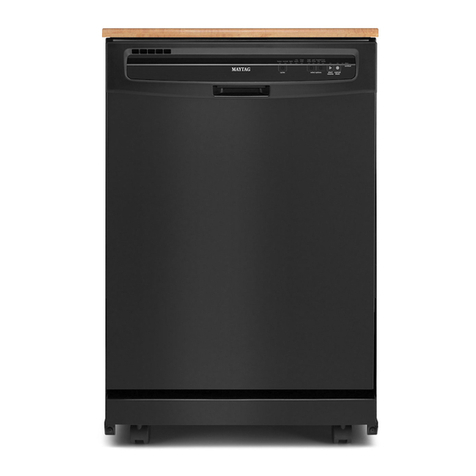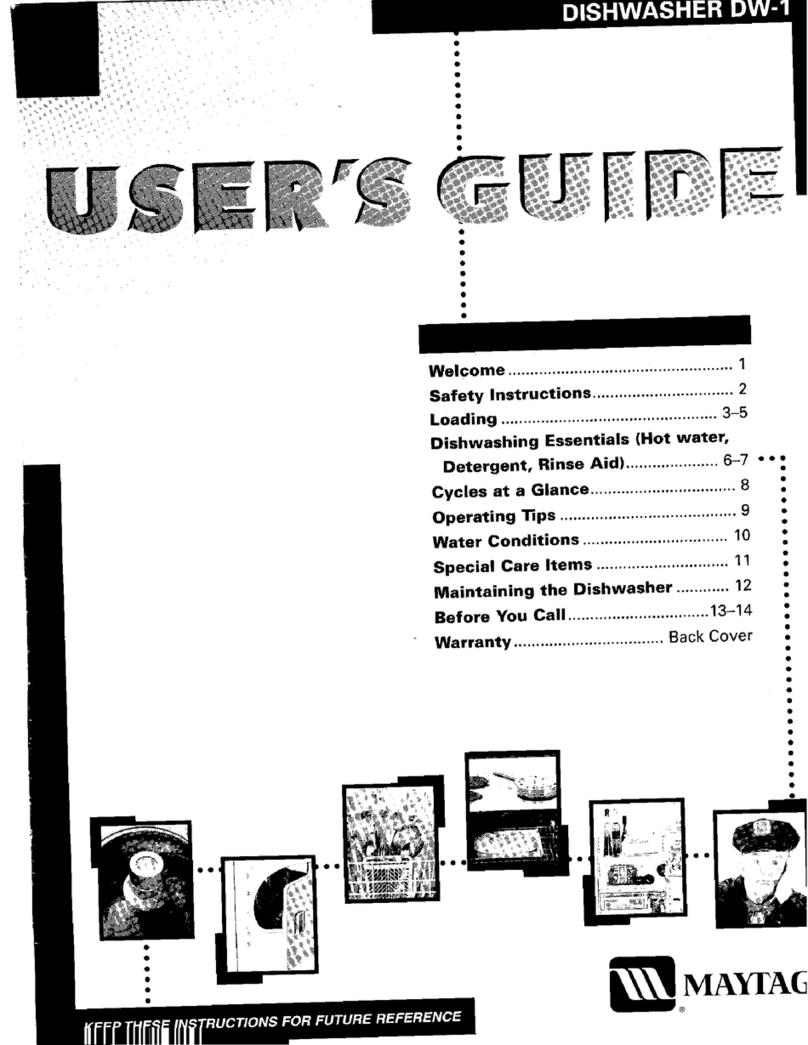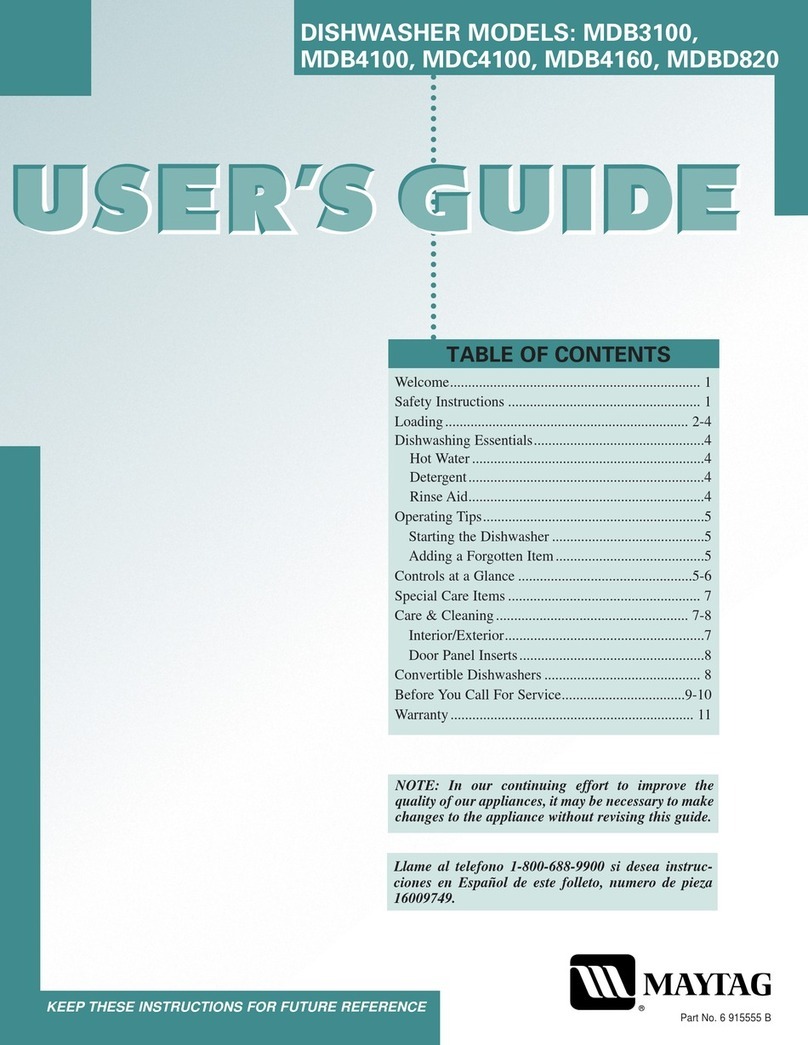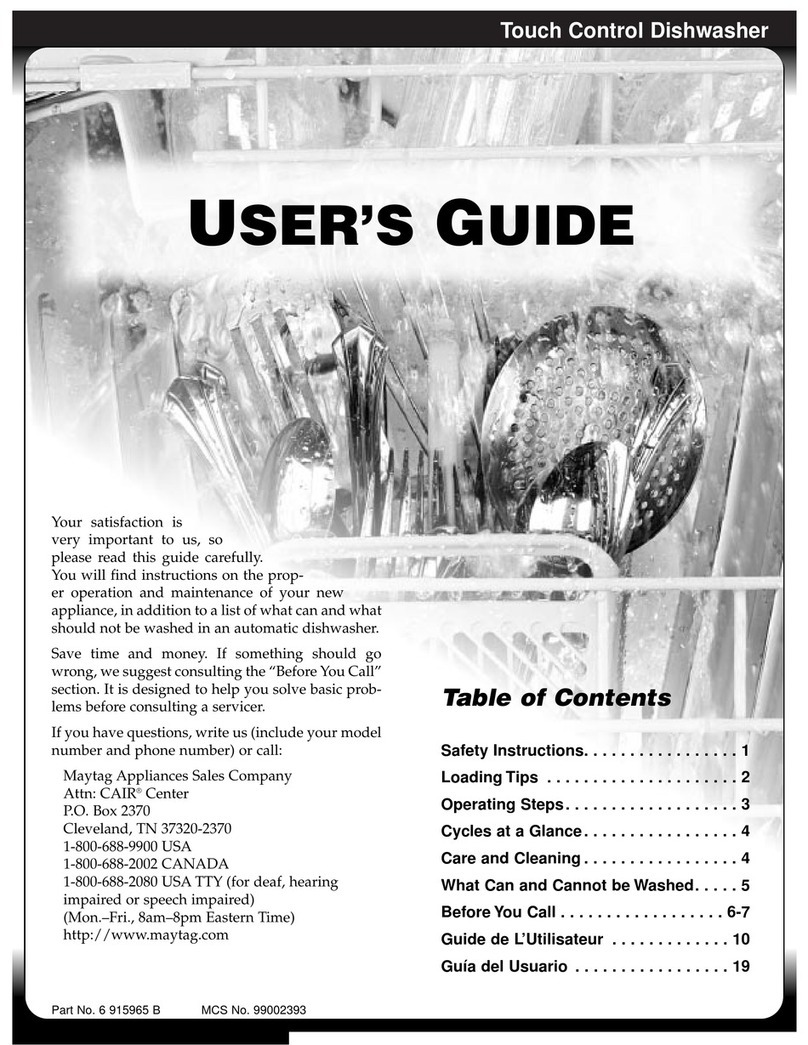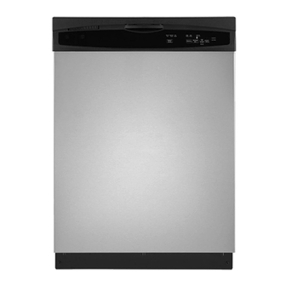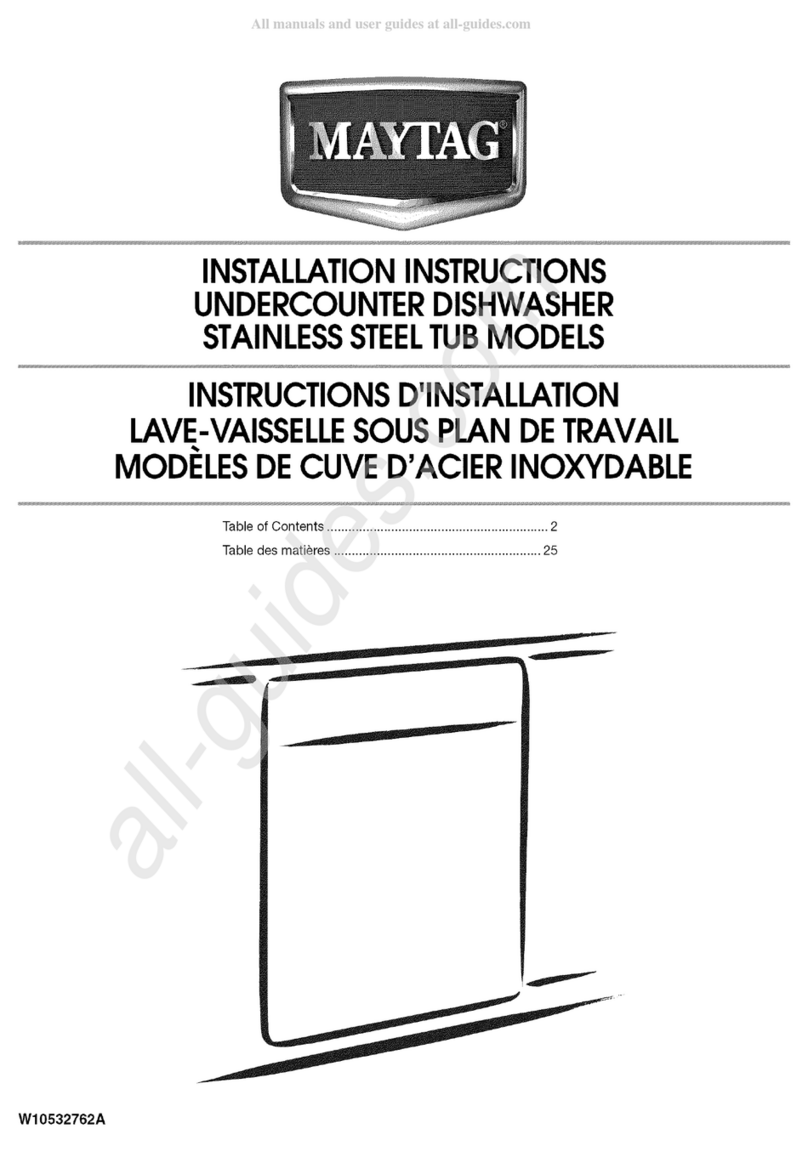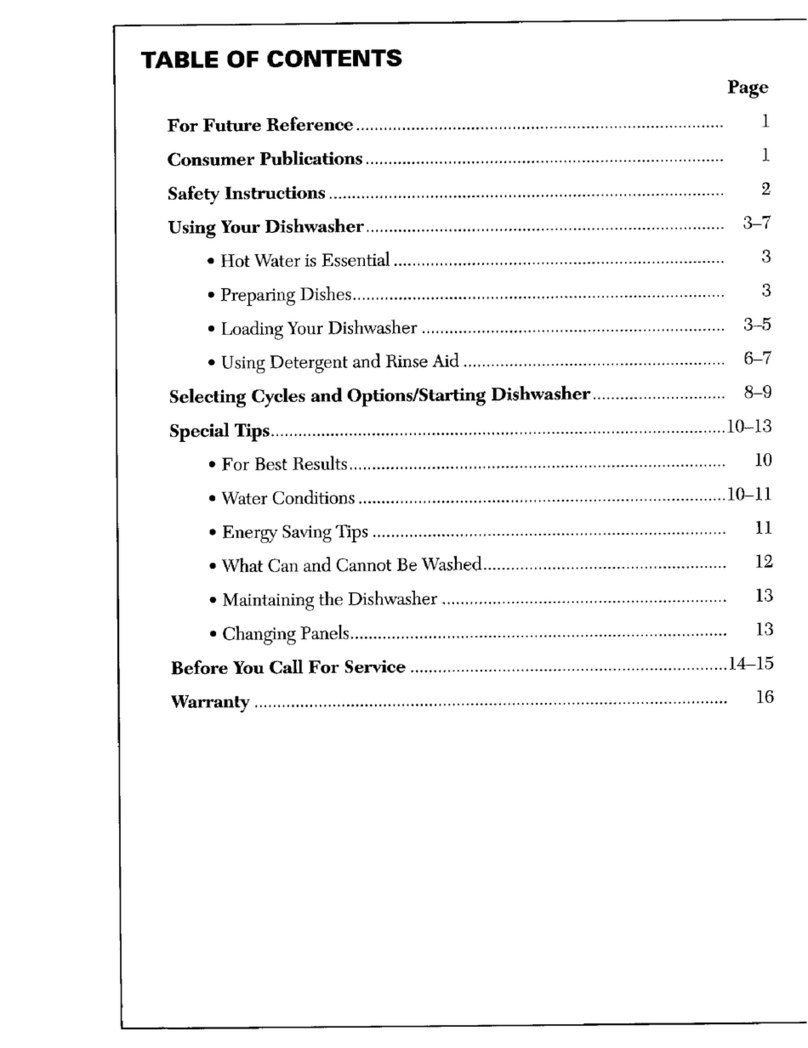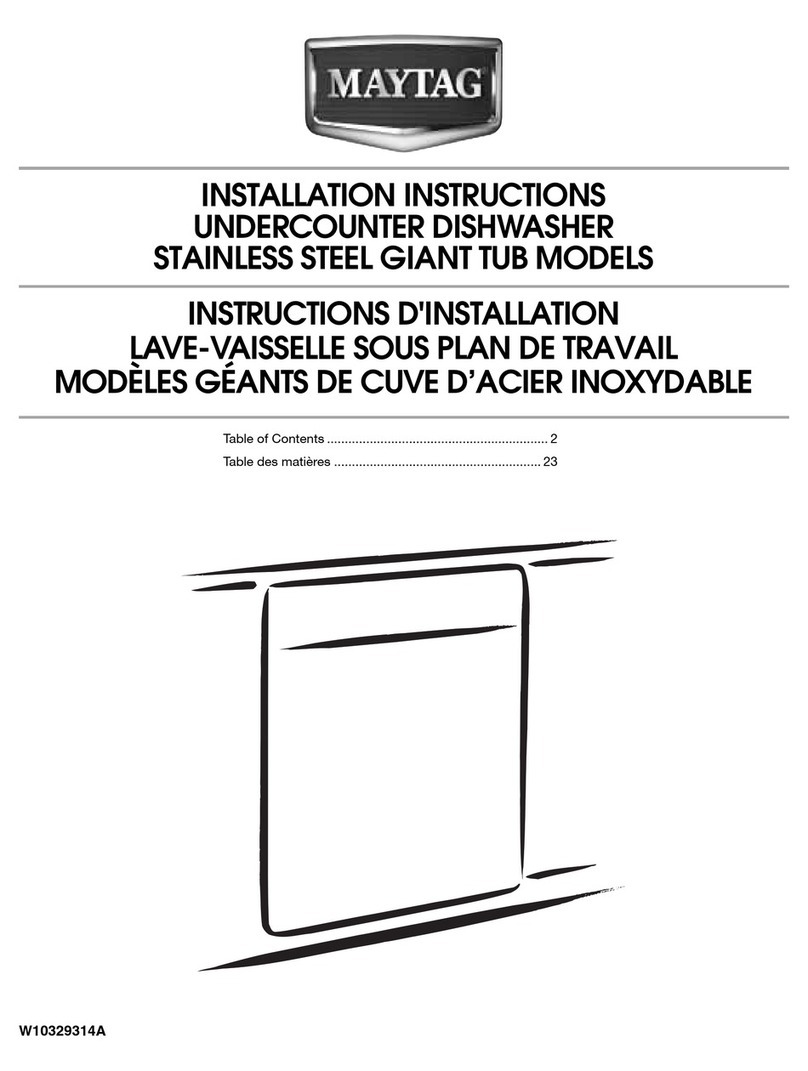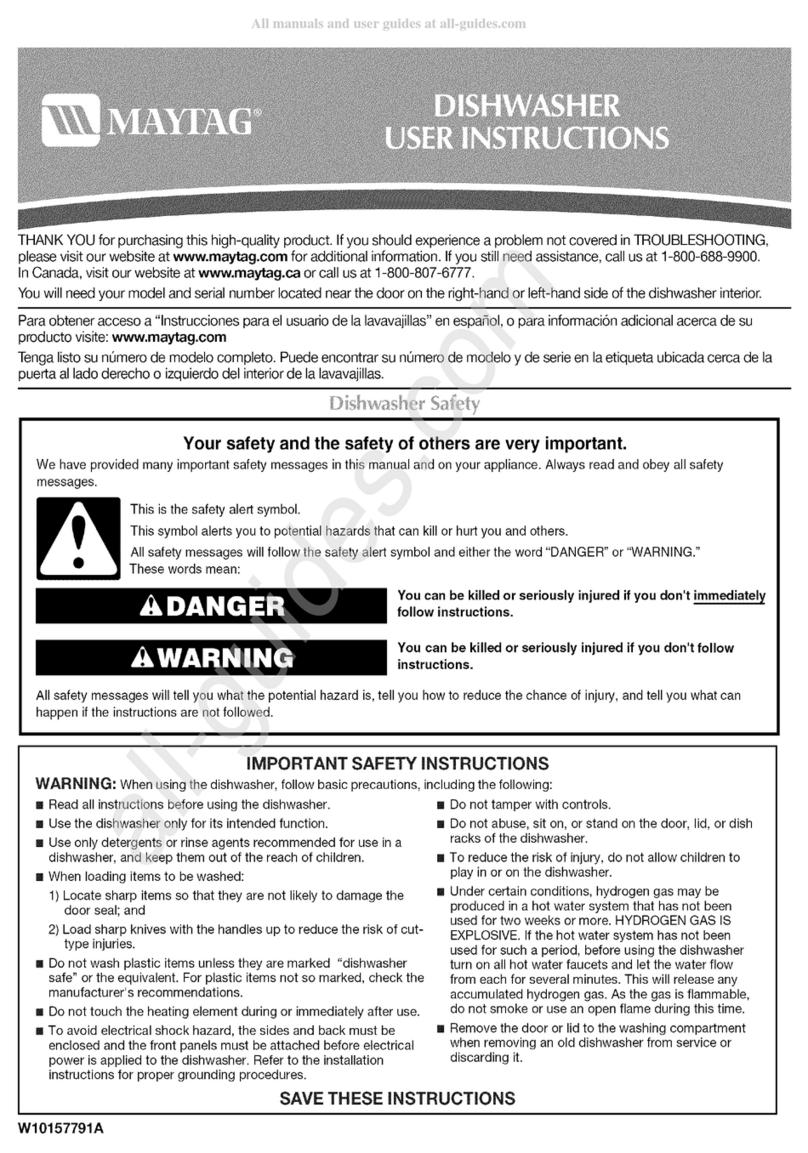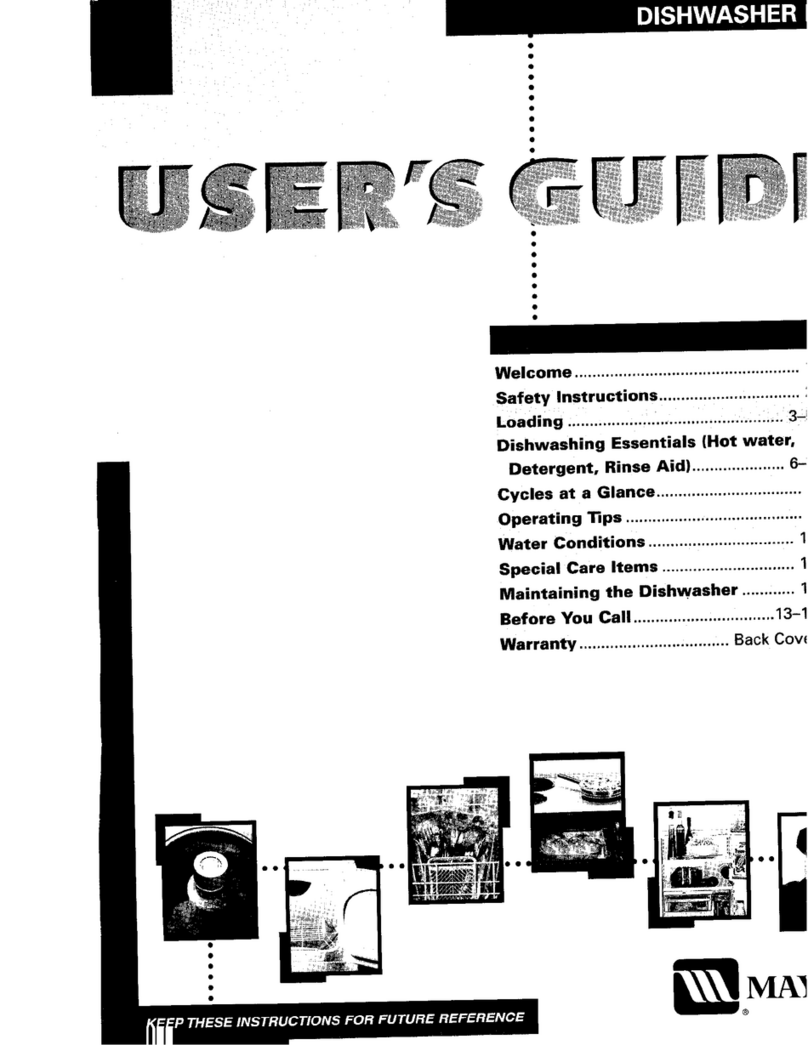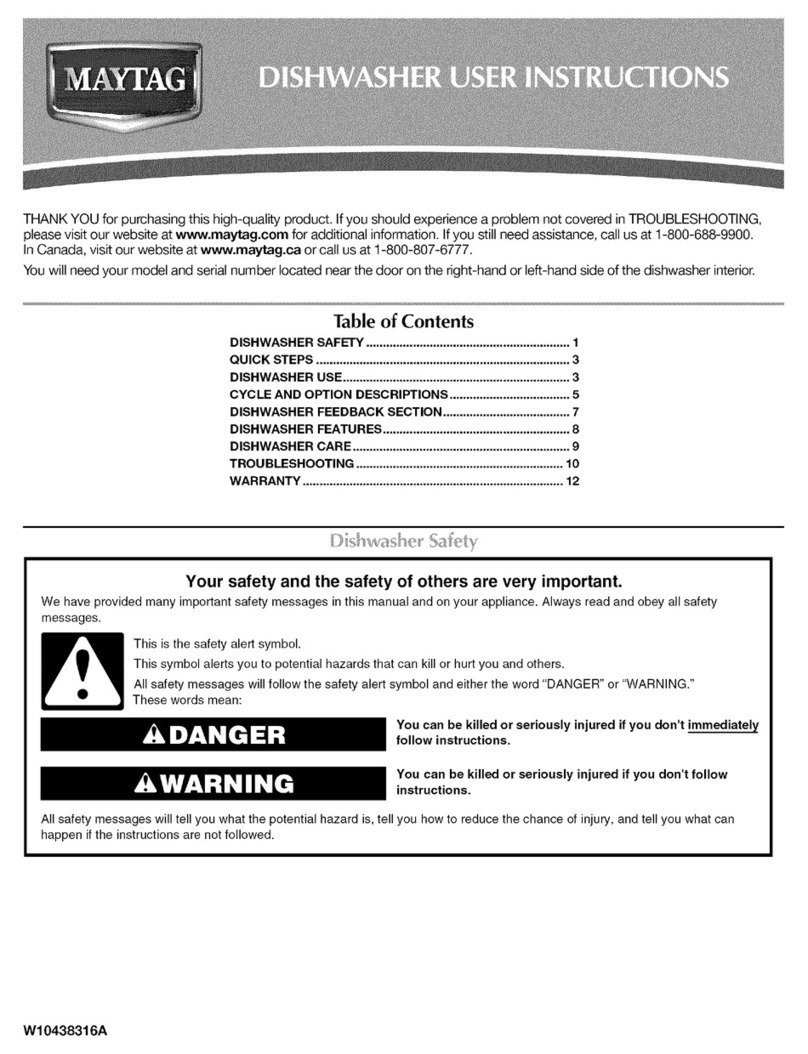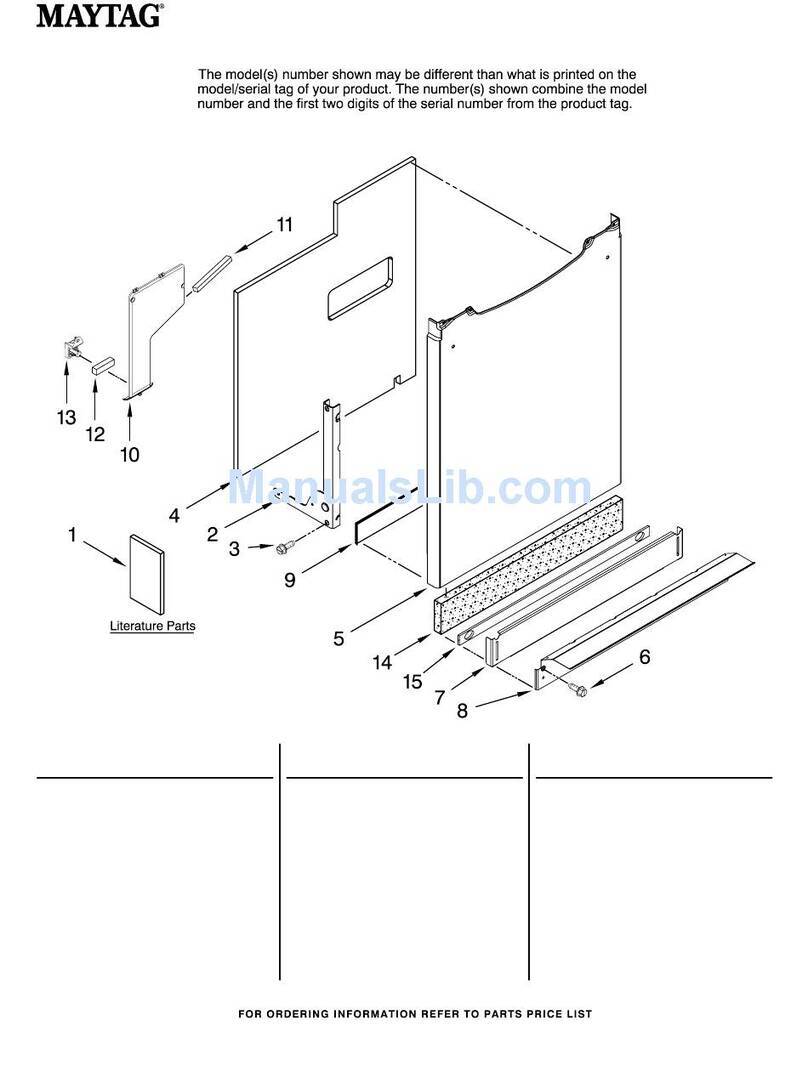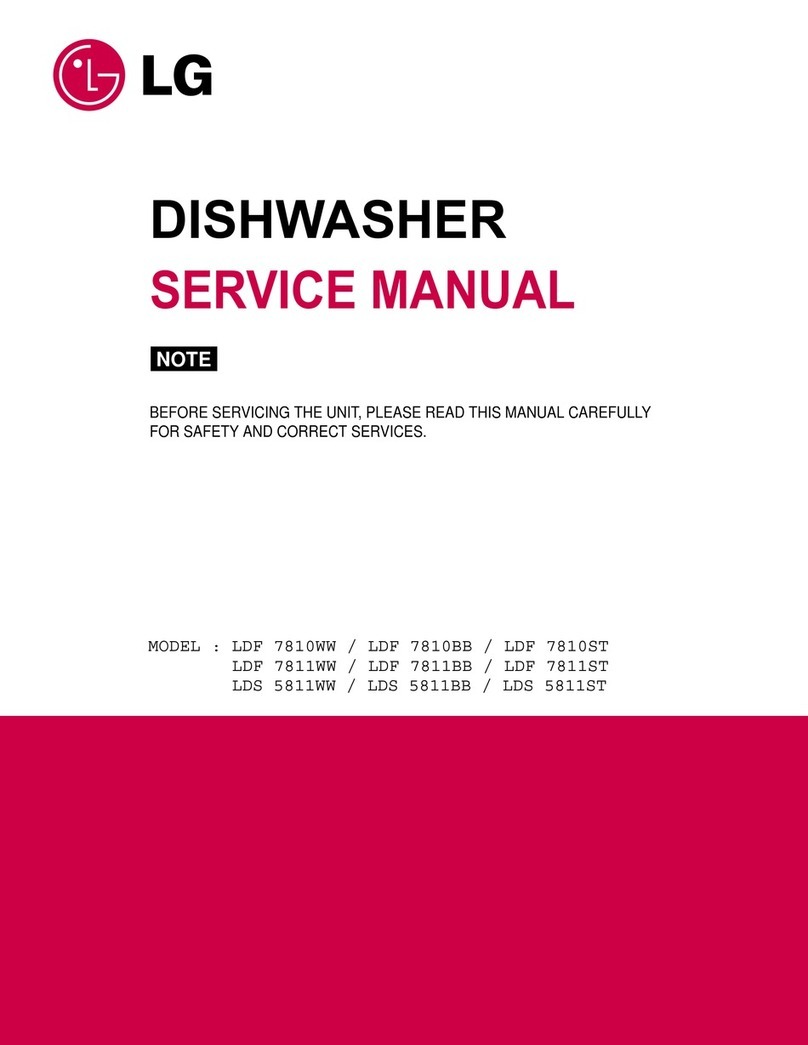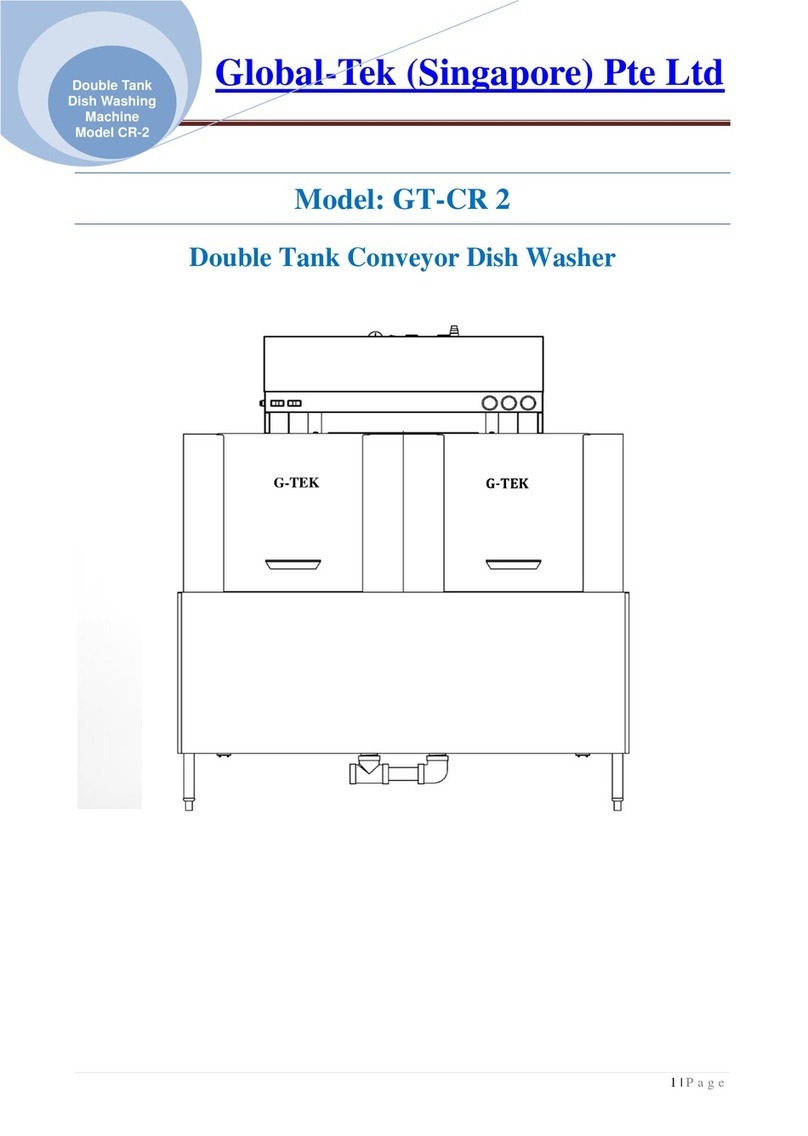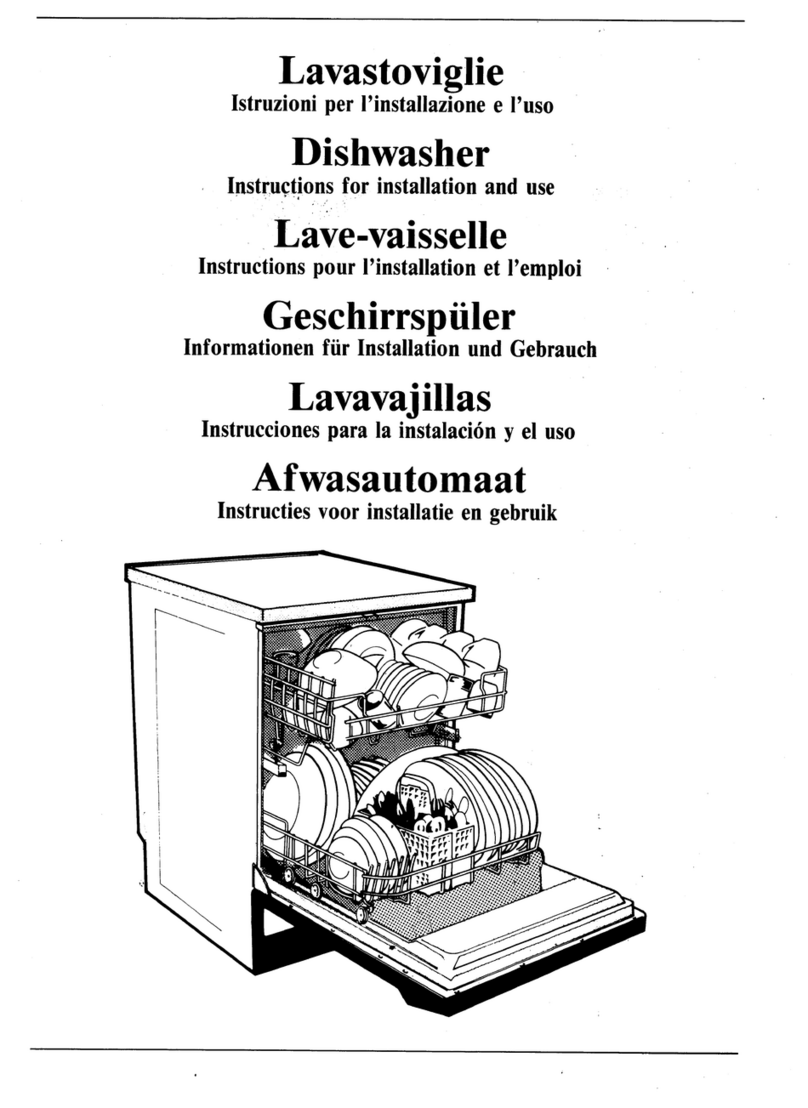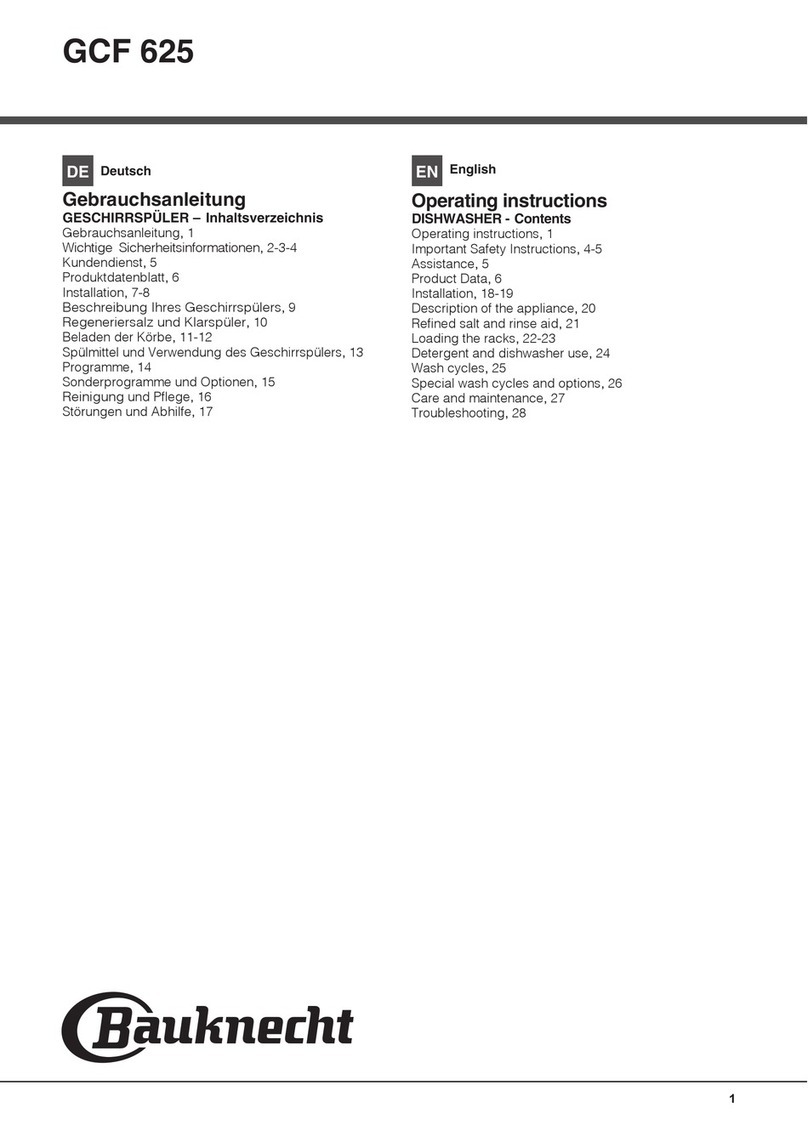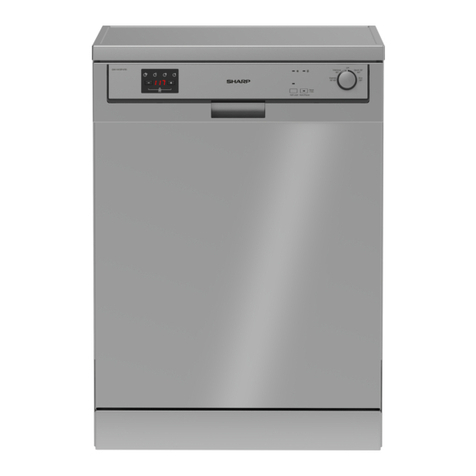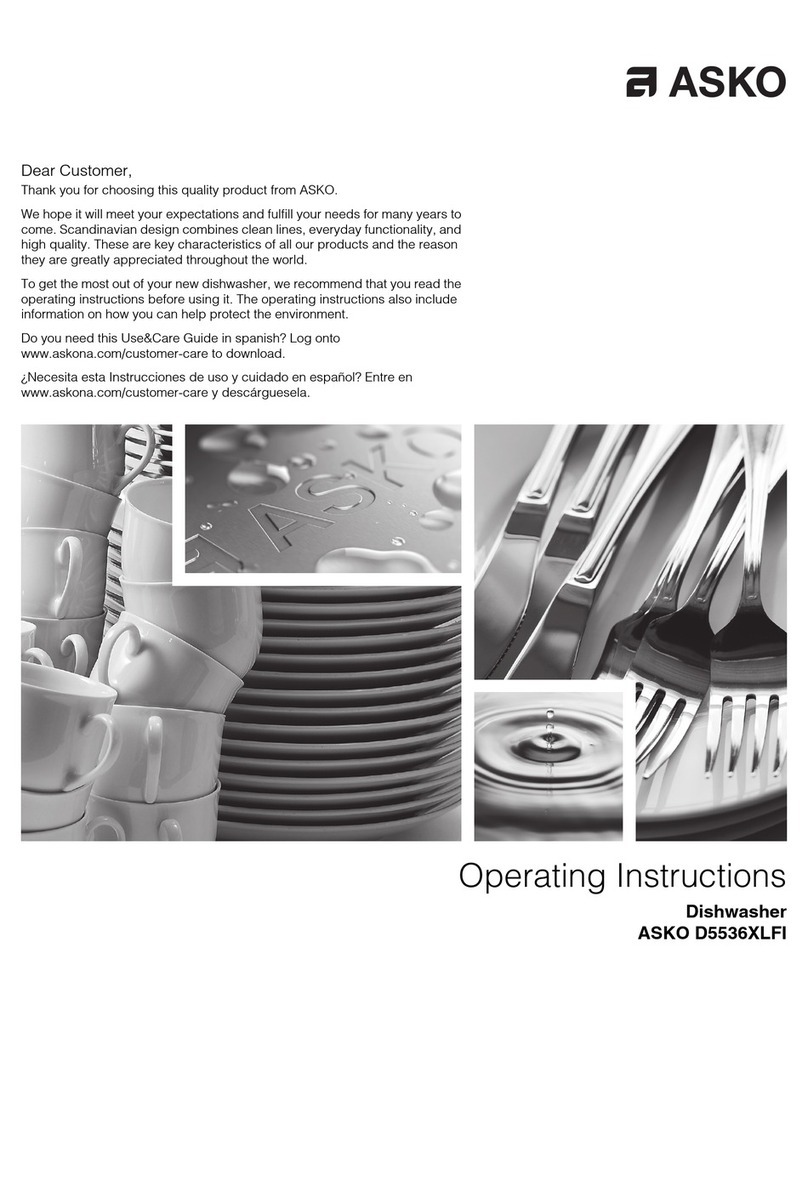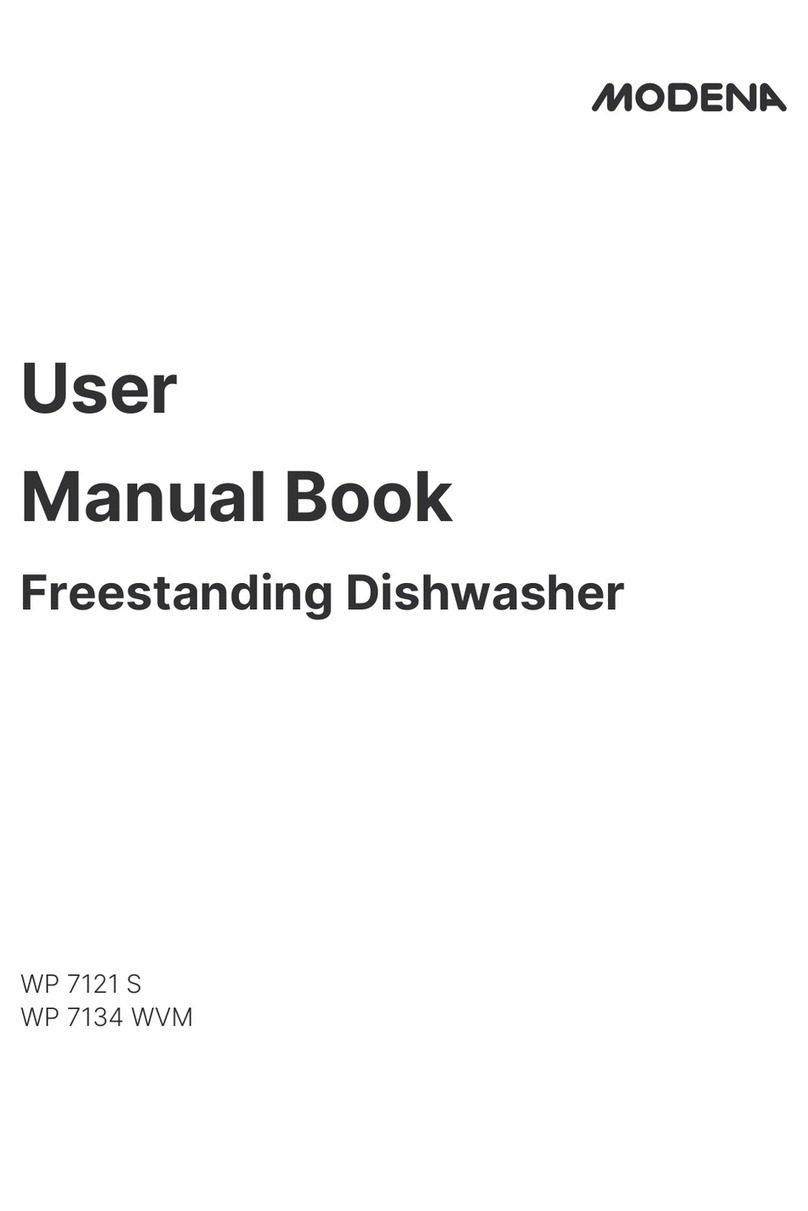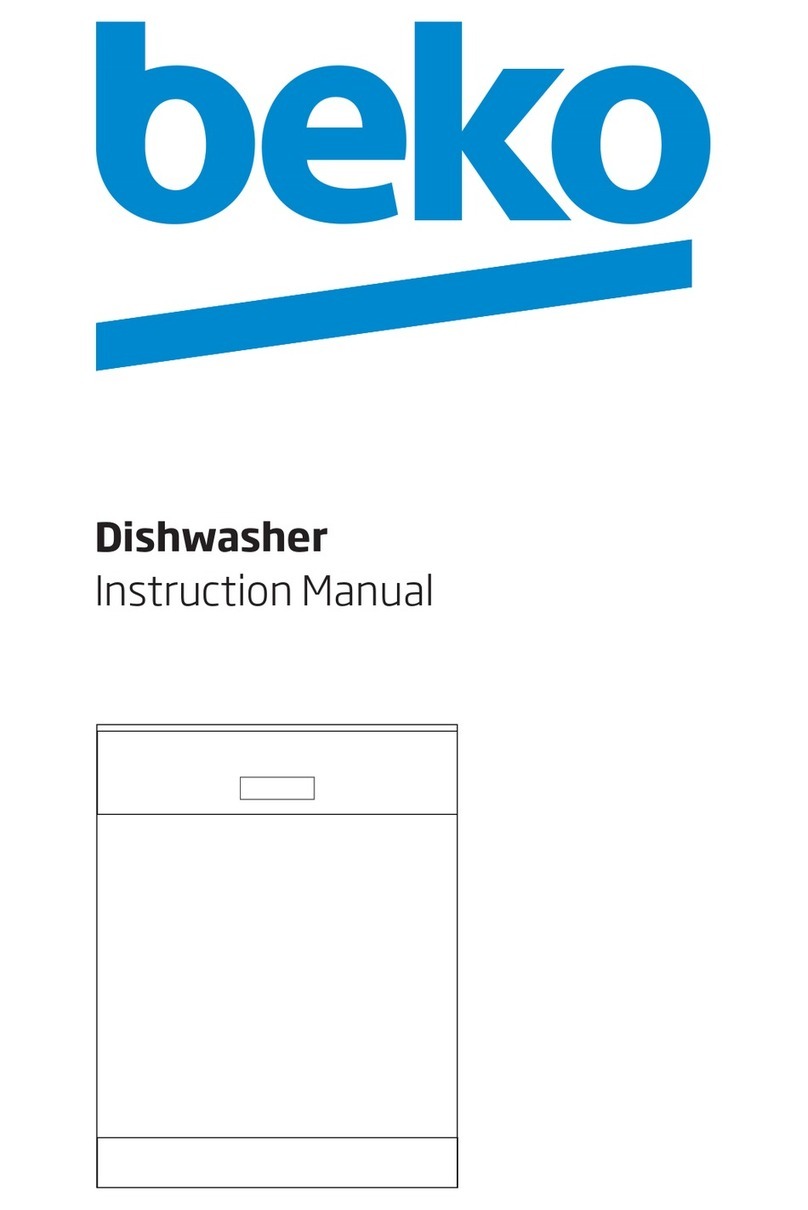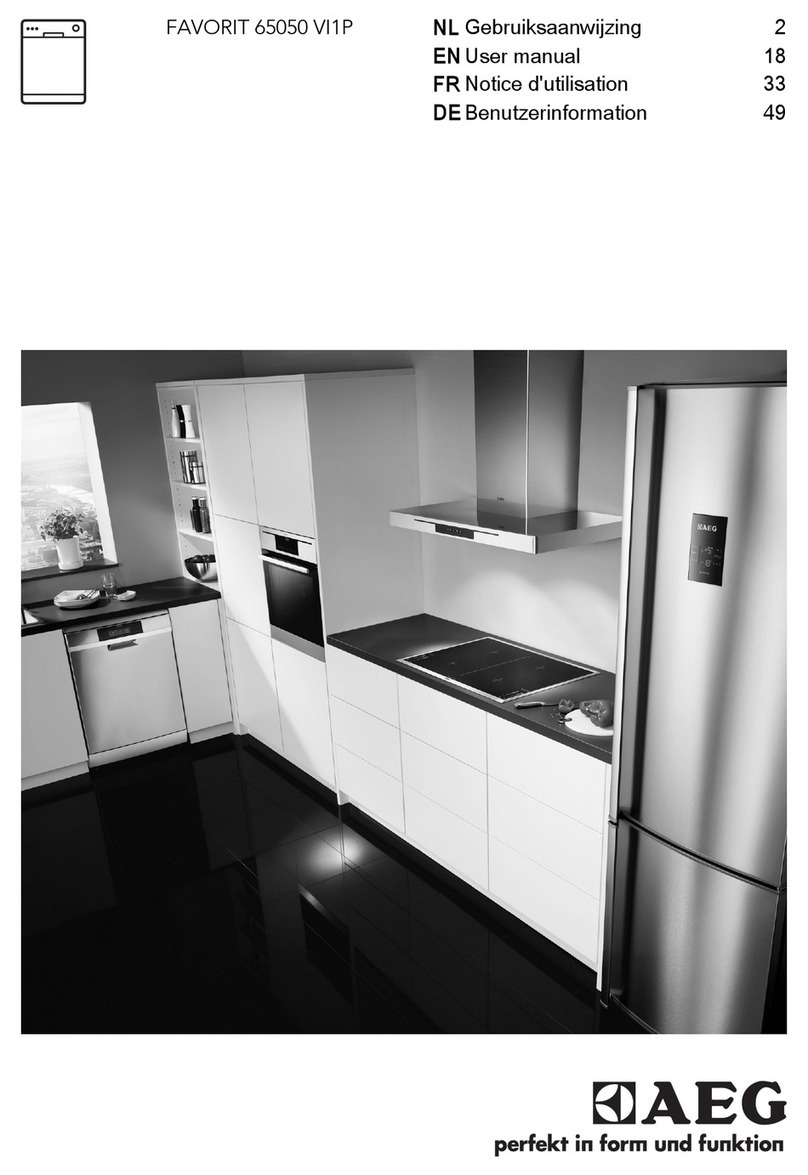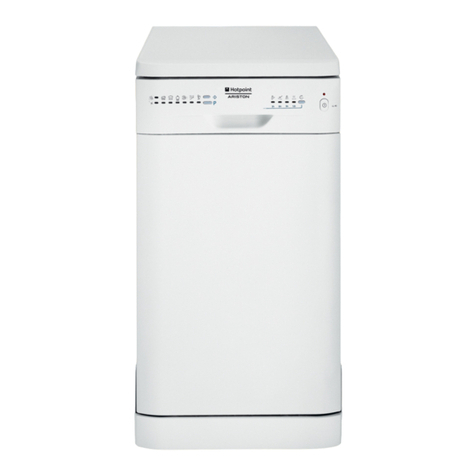Dishwashing Essentials .... '
eQoegeoeeeoooooeeeooc_em©o_eeeoeoo_Beeo
i
HOT Water
To check the incoming water temperature, turn on the
For optimal cleaning and drying results, hot hot water faucet nearestthe dishwasher and letitrun
water is necessary. The incoming water tempera- into aglass in the sink. Place a candy thermometer in the
ture should be 120-140 °F to properly activate the glass and check the temperature once it has stopped
detergent and meltgreasy food soils, rising. If the temperature is below 120°F (49°C), have
If for any reason (such as laundering, showers, etc.) the a qualified person raise the water heater thermostat set-
incoming water temperature is below 120° F (49° C), ting.
select the Temp Sense option to have the dishwasher Before starting the dishwasher, turn on the hot water
thermostatically heat the water to proper temperature, faucet and let it run until the water is hot.
aOOOOOOOO,OeBOOOOOODOOSOOeOOOOO,QOODOeeoO,eOeOooOoOe
Detergent
Use a detergent designed specifically for use in an auto- from the damage that hardwater deposits can cause.
matic dishwasher. Be sure it is fresh and stored in a cool,
dry place (not under the sink). Never use laundry detergent or hand dish-
washing detergent in your dishwasher as it will
Recommended Amount cause severe oversudsing and possible leaks.
The amount of detergent to use depends on the water
hardness (measured in grains per gallon -- gpg) and the Detergent Placement
amount of soil on the dishes. Too little detergent results Add detergent just before starting the cycle.
in poor cleaning,hard water filming/spotting and poor
drying. Too much detergent can cause permanent
etching/cloudiness.
As a rule, use 1 teaspoon of detergent per grain of water
hardness, using a minimum of 3 teaspoons in soft water
situations. Place the recommended amount of detergent
in both cups for Normal and longer cycles. Do not
divide the recommended amount between the cups.
The following chart includes specific recommendations.
Each line in the detergent cup represents 3 teaspoons.
Water Hardness* Detergent Use
Soft (0-3 gpg) 3 teaspoons
Medium (4-9 gpg) 4-9 teaspoons
Hard (10-12 gpg) 10-12 teaspoons For Normal or Pots and Pans cycles place the recom-
mended amount of detergent in both the PRE WASH
*Yourlocal waterutilityor state universityextensionservice and MAIN WASH cups. Close the cover. The dish-
can tellyou the degree ofwaterhardness inyourarea. washer automatically releases detergent.
For water hardness of 13-14 gpg add more detergent (1 A Light/China cycle requires detergent in the MAIN
teaspoon for each gpg above 12)to the beginning of the WASH cup only. Close the cover after adding detergent.
main wash portion of the cycle. Unlatch the door, open The detergent will automatically be dispensed.
it slowly and add detergent to the bottom of the tub.
After relatching the door, the dishwasher will continue The Quick Wash/Rinsecycle needs detergent in the
through the cycle. PRE WASH cup only. Close the cover after adding
detergent. The detergent willautomatically be dis-
If water hardness is 15 gpg or harder, it is difficult to pensed.
achieve good results with any dishwasher. The solution
is a mechanical water softener to improve water quality, Donot use detergent with the Rinse &Holdcycle.
detergent effectiveness, and protect the dishwasher parts Leave the detergent cup lid open when running Rinse &
Hold.
6
